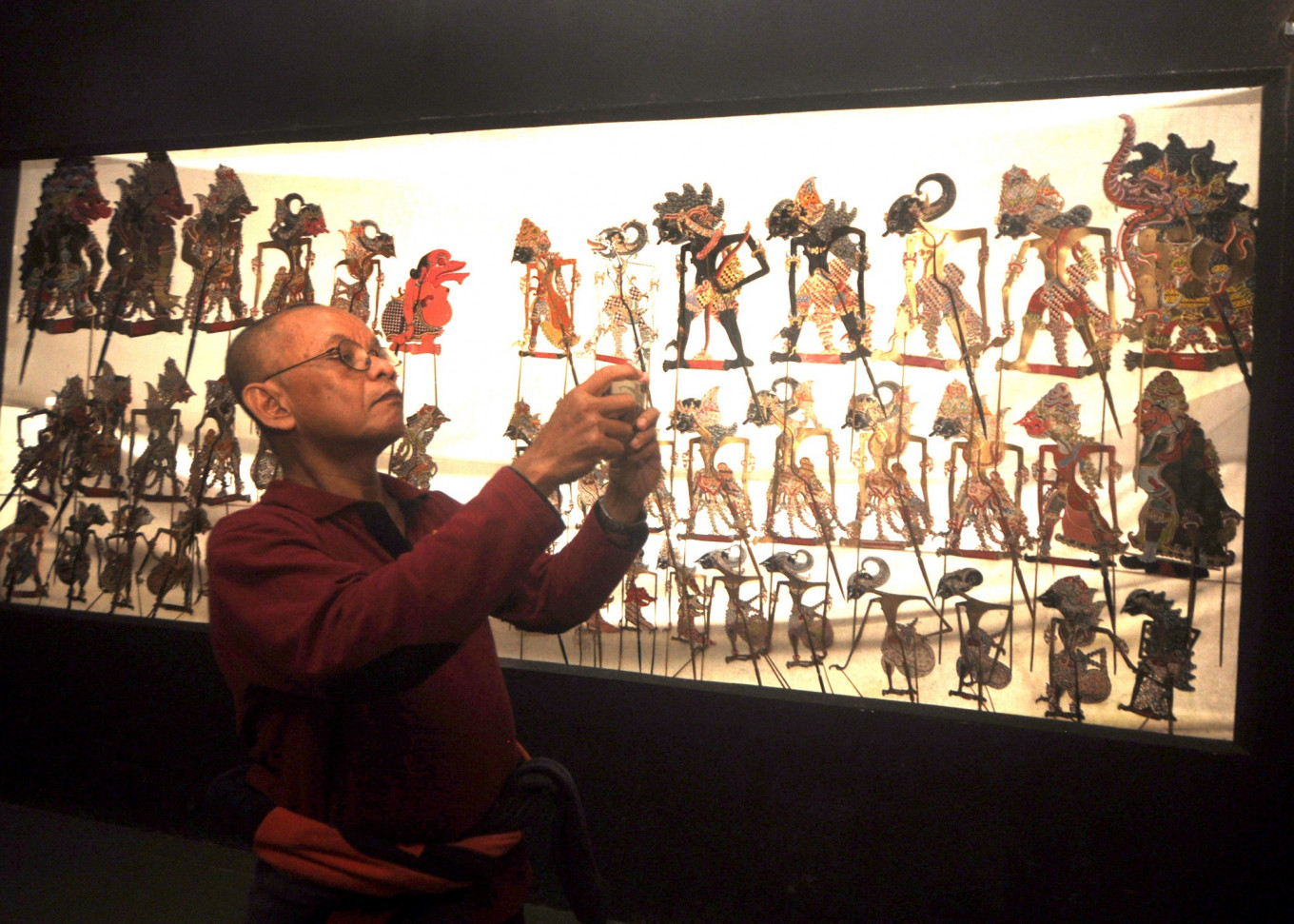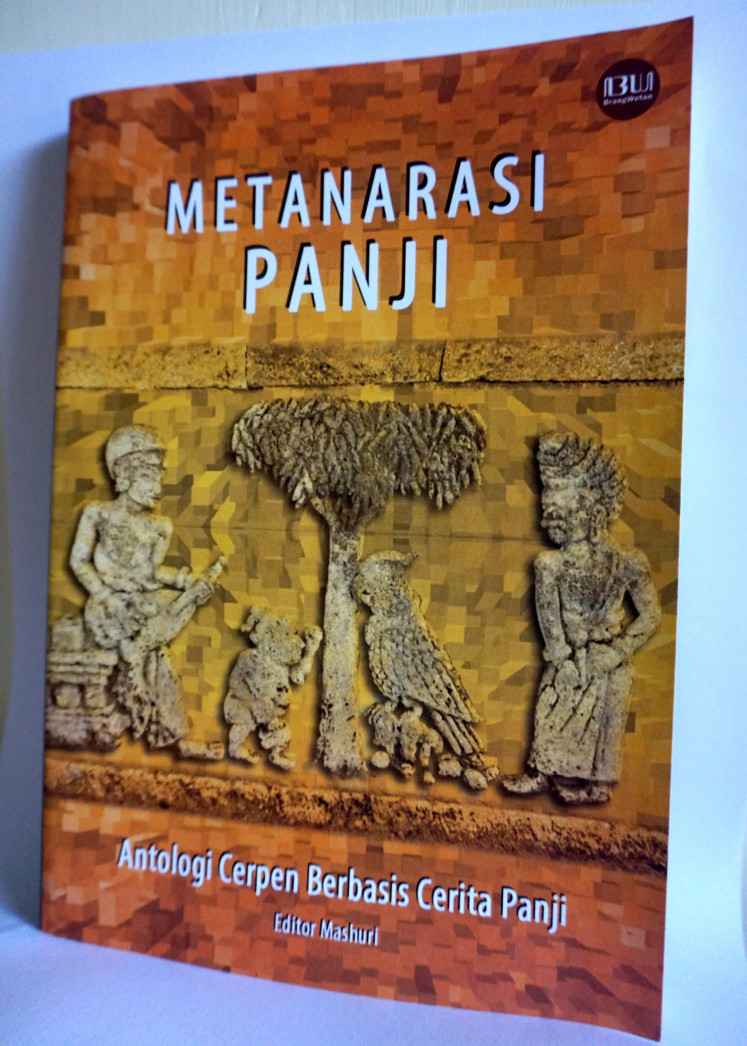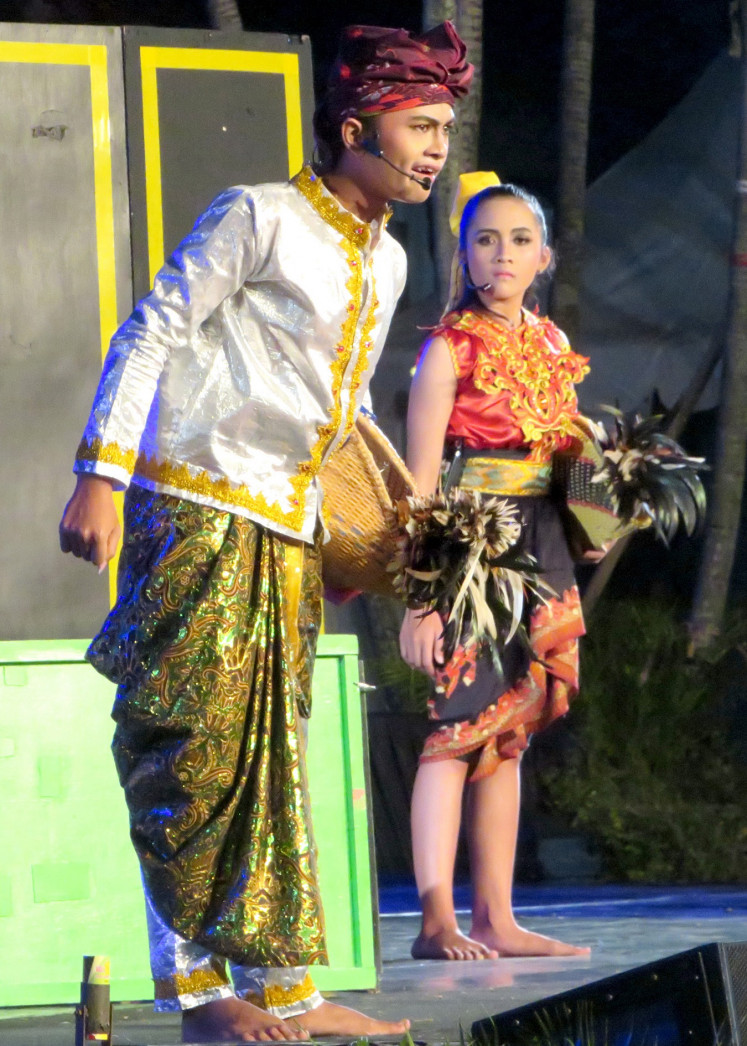Popular Reads
Top Results
Can't find what you're looking for?
View all search resultsPopular Reads
Top Results
Can't find what you're looking for?
View all search resultsA collection of modern Panji anthologies
The stories of Panji, legendary tales of princes from East Java, are literary heritage still relevant in depicting Indonesia’s contemporary and future conditions.
Change text size
Gift Premium Articles
to Anyone
CD
The stories of Panji, the legendary tales of princes from East Java, are literary heritage still relevant in depicting Indonesia’s contemporary and future conditions.
Modern times, however, require some adjustments at times and this is also true for the legend of Panji. In recent years, the legend of Panji has gone through several transformations and one of these are adaptations into modern short stories.
The East Java Art Council organized a Panji-based short story writing contest in 2012 and the publication of its 10 best stories was finally taken over by Komunitas Seni Budaya BranGWetan, an East Java art and culture community, at the end of 2019.
This collection, titled Metanarasi Panji: Antologi Cerpen Berbasis Cerita Panji (Panji Meta-narration: Anthologies of Panji-Based Short Stories), contains 10 stories created by 10 writers with Mashuri as the editor. The authors come from various generations and regions.
Metanarasi Panji: Antologi Cerpen Berbasis Cerita Panji (Panji Meta-narration: Anthologies of Panji Based Short Stories). (JP/Nedi Putra AW)Malang State University professor of literature Djoko Saryono said the short stories had turned the oral tradition of Panji narration into a source of creation.
“These short stories constitute a reception of Panji, trying to transform Javanese Panji legends into Indonesian stories,” he said.
Djoko added that in the context of cultural advancement, the aspects of protection, fostering, development and utilization should be taken into account.
“This meta-narration is the utilization of Panji in the sense of being a source of creativity and innovation," he said.
He noted the evident inter-textual connection between Indonesian and regional literary works.
“It indicates that Indonesian short stories also process traditional roots as a source of literary creation, so that their esthetic links with Panji stories are concrete,” he pointed out.
The stories in this collection adopt the Panji theme in the styles and from the viewpoints of their writers, some following typical Javanese structures and others appearing in modern versions by retaining the original source.
Therefore, Panji is not always related to a prince. The writers have purposely taken it out of the original context to be given new ones so that new interpretations are presented.
Gunawan Maryanto tells the story of Panji Laras. Originally, Panji Laras told the story of a prince, born out of wedlock, who becomes a legend in the cockfighting scene thousands of years ago in East Java. In this adaptation, however, Panji Laras is the name of the captain of a soccer club called PS Cinde Laras, derived from the name of his rooster. The tension and rules of cockfighting seem relevant to the country’s soccer affairs today.
Adapted: The story of Panji Laras with its cockfighting remains a major source of inspiration for Panji short story writing. (JP/Nedi Putra AW)The tale of Ande-Ande Lumut rendered by Malang author the late Ratna Indraswari Ibrahim is not about the rivalry between the ladies or klething to win the love of Ande-Ande Lumut or Prince Panji Asmarabangun like in the original source. Ratna, instead, produced a long monologue of Candra Kirana (a klething) about how a woman should act as a consort who also serves as the first lady.
In another version of Panji Laras, this son of Prince Panji Asmarabangun meets his father only as an adolescent through a cockfighting arena. The rooster of Panji Laras called Cinde Laras overwhelms the cock of the prince. MS Nugroho named his story Jago Untuk Presiden (A Rooster for the President) in an intriguing style.
Panji stories are also familiar to the millennial generation. Panji dan Lebah Madu (Panji and the Honey Bee) was created by Stephanie Yulianto in the style of children’s tales, as she was then also only 9 years old. This fourth grader from Probolinggo narrates the cure of ailing Dewi Sekar Taji, the Prince’s consort, with pure honey found in the forest and guarded by a giant honey bee.
Henri Nurcahyo, an activist of Panji culture from Komunitas Seni Budaya Brang Wetan, said the 10 modern short stories had proven that the spirit of Panji stories could inspire contemporary works.
“Panji stories are actually widely varied, while this short-story collection is mostly inspired by Panji Laras and Ande-Ande Lumut,” Henri said.
According to Henri, this fact shows that Panji legends had potential to become more popular.
“The government and cultural activists have held Panji festivals but they aren’t accompanied by the publication of Panji literary works,” said the author of Memahami Budaya Panji (Understanding Panji Culture). This in turn has limited present-day artists’ references and comprehension of Panji stories.
The substance Panji tales like love, reunion, relentless pursuit, travelling, adventure, disguise, being a model, heroism and chastity can still be explored and developed to compose today’s interesting stories.
“Such values can be grasped as a means of comprehending conventional Panji stories,” Henri said.
Those already familiar with conventional Panji tales might be confused when coming across different interpretations. But in fact, such versions can enrich their Panji understanding, as depicted among others in The King, a short story by Afrizal Malna, which Henri described as a bit absurd.
“People alien to conventional Panji will gain an understanding of the true essence of Panji stories,” he added.
Henri hoped Panji literacy would grow, especially among youths.
This lecturer of Panji studies at PGRI Adibuana University (Unipa) Surabaya has gathered 160 Panji stories he assigned his students to write, which will be published as a book. For Henri, Panji stories form an inexhaustible cultural resource.
“The Majapahit kingdom entered its heyday with Panji legends, so never abandon Panji literature,” he stressed.













